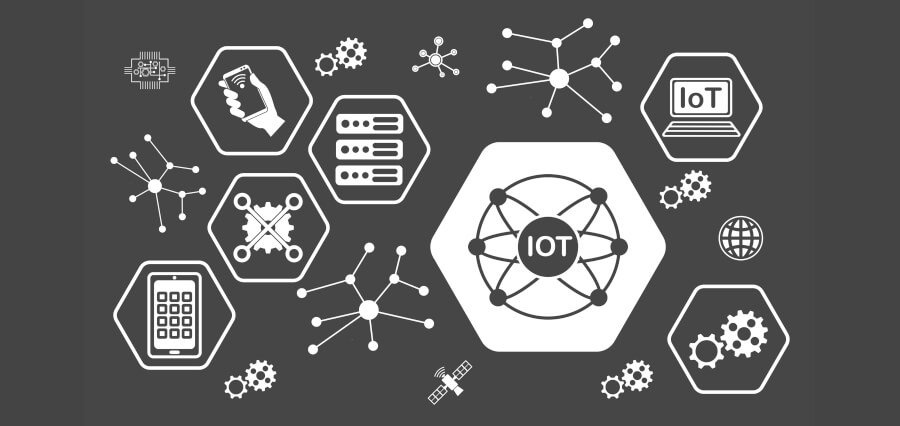Architecture and Implementation
The Internet of Things (IoT), has come to be the transformative force in the development of smart spaces, revolutionizing how we interact with our environments. Smart spaces, which include residential, commercial, and public areas, have become places where efficiency, comfort, and sustainability are enhanced by interconnected devices and systems.
This article will therefore discuss the role of IoT in the making of smart spaces, considering applications across diverse sectors and possible future enhancements.
Understanding Smart Spaces
A smart space is a space with interconnected objects or things that gather data and make decisions in real-time for efficient performance of space. These spaces incorporate the IoT technology to generate an environment that has intelligent responsive qualities to address the needs of the consumers. By combining sensors, actuators, cameras, and other smart devices, it is possible for a smart space to measure the following parameters: such factors as temperature, light intensity, occupancy and energy consumption. Automation in turn, makes it easier to adapt data-driven approaches in real-time, enhancing the user encounter as well as operation.
Key Components of Smart Spaces
- Sensors: These devices are the “eyes and ears” of smart spaces, which collect information about surrounding environmental elements.
- Connectivity: Network connectivity must be reliable; that can be Wi-Fi, Bluetooth connectivity, etc.
- Data Analytics: Advanced analytics processes the collected data to derive actionable insights for improving space management.
Application of IoT in Smart Spaces
The integration of IoT in smart spaces spans multiple sectors, each benefiting from enhanced operational capabilities:
- Residential Spaces: In homes, IoT technology enables control of some systems and their automation. Some of the applications include smart thermostats that control heating and cooling based on presence, smart lighting that can be turned on or off using a mobile application and those that can be controlled using voice commands through home virtual assistants such Amazon Alexa or Google Assistant. They perform an added advantage of increasing comfort through new ways, all while acting in the best interest of conserving energy.
- Commercial Environments: There is no doubt that IoT is very useful on offices and commercial building where energy has to be closely monitored and productivity has to be increased. Some of the smart features include natural light sensing as well as people motion sensors.
In addition, smart HVAC serves also its purpose to sustain the quality and comfort of the air by regulating itself through data received by occupancy sensors. It can therefore lead to large yearly savings on utilities bills while at the same time creating a healthier workplace.
- Healthcare Facilities: In the healthcare context smart spaces which are installed in the IoT devices can help in caring for the patient and ensure the environment of the patient is suitable for the recovery. For instance, sensors can monitor patients’ movements to ensure the identification of appropriate responses during an emergent situation as well as enhanced response time. Further, IoT technology is very useful in handling work flow since it streamlines the work of tracking and ordering medical stocks.
- Retail Spaces: Internet of things solution is becoming popular among the retailers for improving the customer experience and business automation. One example of Connectedness is smart shelves fitted with sensors to track inventory levels; staff will be alerted when a particular shelf is low on stock. In addition, sales promotions and customer services can also be delivered depending on the computing and analysis of market data involving a specific customer. Smart mirrors help customers summon sizes or colors without having to step outside the fitting room.
Future Prospects of IoT in Smart Spaces
With every advancement being integrated with IoT technology, the future of smart spaces will be brighter. Artificial intelligence and machine learning are new improvements that will deliver the added feature of predicting analytics based on user needs in smart environments. It is going to promote sustainable practices in different sectors by optimizing resource consumption and eliminating wastage by IoT.
Smart cities are becoming a reality, as cities use IoT in resource management, including smart traffic control, waste management, and public safety projects. As technology becomes more user-friendly, smart spaces will emphasize more and more the individual’s experience through personalized settings adapting in real time to the individual’s choices.
Challenges Ahead
Although the benefits associated with IoT in smart spaces are numerous, but challenges do exist. Security aspects, such as data privacy and cyberattack possibilities, are a serious threat that will need to be addressed using robust security frameworks. Besides, the diversity of technologies employed will necessitate standardization of the different technologies to guarantee compatibility between devices and platforms.
Conclusion
This role of IoT is transformative, in terms of its impact on the quality of living and working through enhanced efficiency and the betterment of quality life. It is bound to further advance as technology evolves, making way for new innovative applications in every other field. Adopting such change will not only be a more sustainable activity but will also increase people’s affinity toward their environment. The journey to fully realized smart spaces has just begun, but the impact of IoT is already seen in homes, workspaces, healthcare facilities, and retail environments alike.





